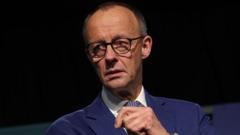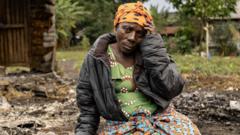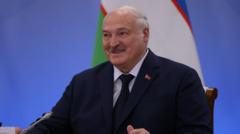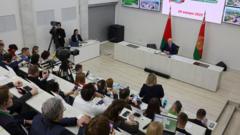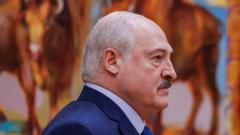The resignation of Serbian Prime Minister Milos Vucevic is a response to mounting public dissatisfaction after a deadly railway station incident, raising questions about the future of the ruling party.
**Serbian PM Resigns Amidst Public Outcry Over Tragic Incident**
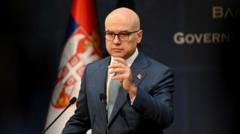
**Serbian PM Resigns Amidst Public Outcry Over Tragic Incident**
Serbia faces potential political turmoil as PM Vucevic steps down following widespread protests.
Serbian Prime Minister Milos Vucevic has officially resigned less than a year after taking office, amidst ongoing protests triggered by the tragic collapse of a railway station canopy that claimed fifteen lives in Novi Sad last November. Vucevic stated his resignation was intended to help de-escalate tensions in a society that has seen massive demonstrations demanding accountability for the disaster and criticizing widespread government corruption.
The collapse of the concrete canopy has sparked outrage across Serbia, leading to sustained protests where tens of thousands of citizens, particularly students, have mobilized to call for action. During these protests, students have effectively blocked major roads and campuses, alongside significant participation in organized strikes, including a general work stoppage last Friday. The unrest has also led to over a dozen arrests, including former Transport Minister Goran Vesic, who resigned shortly after the tragedy.
In a notable display of dissent, demonstrators escalated their protests this week with a 24-hour blockade of a critical junction in Belgrade, which resulted in a clash that left a female student injured. In response to the growing unrest, President Aleksandar Vucic has promised to pardon students facing legal repercussions for their involvement and hinted at a potential reshuffling of his cabinet that may affect many current ministers.
Although Vucevic's resignation has been a significant political shift, the true power dynamics in Serbian politics may remain unchanged as the ruling Serbian Progressive Party, led by President Vucic, still holds considerable control over media and political narratives. This situation raises concerns regarding the long-term impact on the protests; if demonstrators view the resignation as a genuine victory, they may choose to temper their actions, while continued agitation could signal ongoing instability for the government.
The upcoming weeks may reveal whether the protest movement diminishes in intensity or if additional actions ensue, potentially leading to more changes in Serbia’s political landscape.
The collapse of the concrete canopy has sparked outrage across Serbia, leading to sustained protests where tens of thousands of citizens, particularly students, have mobilized to call for action. During these protests, students have effectively blocked major roads and campuses, alongside significant participation in organized strikes, including a general work stoppage last Friday. The unrest has also led to over a dozen arrests, including former Transport Minister Goran Vesic, who resigned shortly after the tragedy.
In a notable display of dissent, demonstrators escalated their protests this week with a 24-hour blockade of a critical junction in Belgrade, which resulted in a clash that left a female student injured. In response to the growing unrest, President Aleksandar Vucic has promised to pardon students facing legal repercussions for their involvement and hinted at a potential reshuffling of his cabinet that may affect many current ministers.
Although Vucevic's resignation has been a significant political shift, the true power dynamics in Serbian politics may remain unchanged as the ruling Serbian Progressive Party, led by President Vucic, still holds considerable control over media and political narratives. This situation raises concerns regarding the long-term impact on the protests; if demonstrators view the resignation as a genuine victory, they may choose to temper their actions, while continued agitation could signal ongoing instability for the government.
The upcoming weeks may reveal whether the protest movement diminishes in intensity or if additional actions ensue, potentially leading to more changes in Serbia’s political landscape.


